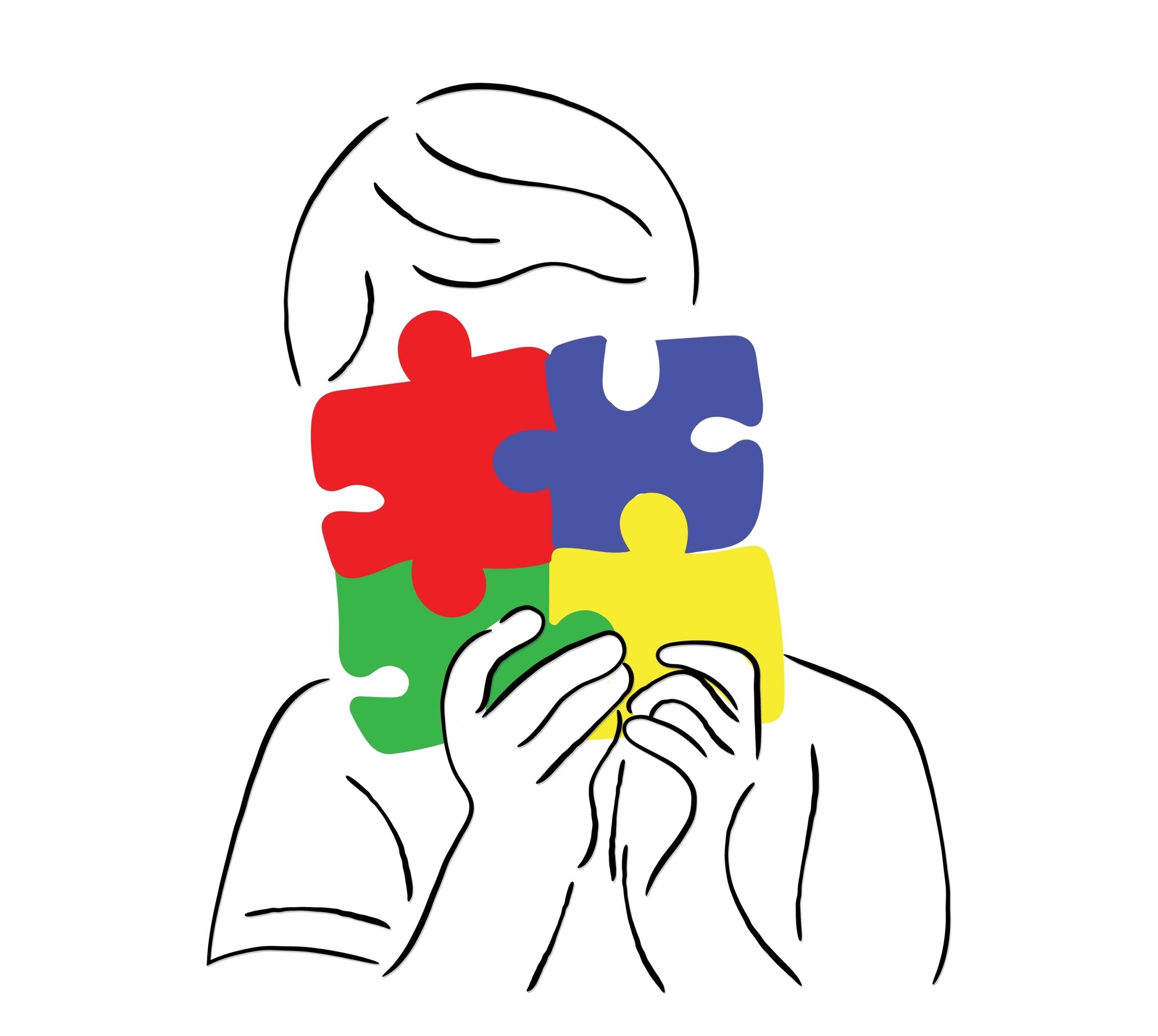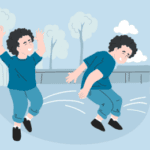
Blog
The Difference Between Sensory Seeking and Sensory Avoiding
Author: DrSensory
July 11, 2025
The Difference Between Sensory Seeking and Sensory Avoiding
Have you ever noticed how one child might run toward the loudest, most chaotic part of the playground, while another covers their ears and wants to leave? Or why one child loves to get covered in mud, while another can’t stand having sticky fingers? These distinct reactions often come down to how a child’s nervous system processes sensory information from the world around them. This is the core of sensory processing.
For many children, especially those with Sensory Processing Disorder (SPD), autism, or ADHD, these responses can be categorized into two main profiles: sensory seeking and sensory avoiding. Understanding which profile your child fits—or if they show a mix of both—is a crucial step toward creating a supportive environment that helps them feel calm, organized, and ready to learn. This guide will explain the differences between sensory seeking and sensory avoiding, help you identify your child’s unique preferences, and provide effective strategies to support their needs.
What Is Sensory Seeking?
A sensory seeker is a child whose nervous system is under-responsive to sensory input. In simple terms, their brain needs more intense, frequent, or longer-lasting sensations to register what is happening. To get this input, they actively seek it out. They are the “more” kids—they want more movement, more noise, more touch, and more intensity.
For a sensory seeker, the world can sometimes feel a bit dull, and they generate their own stimulation to feel regulated. This can look like hyperactivity or even misbehavior, but it’s often their body’s way of trying to wake up their nervous system. Their actions are purposeful, even if they don’t look that way. They are feeding their brain the input it needs to feel organized and aware.
Common characteristics of a sensory seeker include:
- Constant Motion: They seem to never stop moving. They may fidget, run, jump, spin, or crash into furniture and people on purpose.
- Physical Touch: They love deep pressure and enjoy bear hugs, being squished under pillows, or wrestling. They might touch everything and everyone, sometimes without realizing their own strength.
- Loud Noises: They might make loud noises themselves, turn up the volume on devices, or enjoy environments with a lot of background noise.
- Oral Fixation: They may frequently chew on non-food items like their shirt collar, pencils, or toys. They often prefer foods with strong flavors, like spicy or sour tastes.
- Visual Stimulation: They are drawn to bright lights, vibrant colors, and fast-moving objects on screens.
For a sensory seeker, climbing to the very top of the jungle gym or spinning until they are dizzy isn’t just about play; it’s about feeding their brain the sensory input it craves to feel balanced and organized.
What Is Sensory Avoiding?
On the opposite end of the spectrum is the sensory avoider. This child’s nervous system is over-responsive, or hypersensitive, to sensory input. Their brain registers sensations far more intensely than a typical person’s. Everyday input that most people might not even notice—like the hum of a refrigerator, the tag on a shirt, or a light touch on the arm—can feel overwhelming, irritating, or even painful.
To cope, a sensory avoider will do everything they can to limit or escape these sensations. Their behavior is often misinterpreted as shyness, anxiety, or defiance, but it is a protective response to a world that feels too loud, too bright, and too much. Their fight-or-flight system is easily triggered by everyday sensations, leading them to withdraw or have meltdowns to protect themselves from the sensory assault.
Common characteristics of a sensory avoider include:
- Aversion to Touch: They may pull away from hugs, dislike having their hair brushed, and avoid messy activities like finger painting or playing in sand. They often prefer to be the one to initiate touch.
- Sound Sensitivity: They are easily distressed by loud or unexpected noises, such as vacuum cleaners, sirens, or crowded rooms. They might frequently cover their ears.
- Picky Eating: They often have a very limited diet, avoiding certain food textures, smells, or temperatures. Mealtimes can be a significant source of stress.
- Visual Overload: They can become overwhelmed in visually busy environments like supermarkets or brightly decorated classrooms. They might prefer dimly lit spaces.
- Cautious Movement: They may be fearful of playground equipment like swings or slides and seem uncoordinated or clumsy. They prefer to keep their feet firmly on the ground.
For a sensory avoider, a predictable and calm environment is essential. They thrive when they can anticipate what’s coming next and have control over the sensory input they experience.
How to Identify Sensory Preferences in Children
So, how can you figure out where your child lands on this spectrum? The key is careful observation. Start by paying attention to your child’s behavior in different environments and during various activities. It’s also important to know that many children are not purely one or the other; they can be sensory seeking in some areas and sensory avoiding in others. For example, a child might crave intense movement but be extremely sensitive to loud noises. This mix of responses can be confusing, but it’s quite common.
Here are some steps to help you identify their preferences:
- Keep a Sensory Journal: For a week, jot down notes about your child’s reactions. When do they seem happiest and most regulated? When do meltdowns or challenging behaviors occur? Note the environment, the time of day, and the specific sensory input involved (e.g., sound, touch, movement).
- Look for Patterns: Review your journal. Do you notice a pattern? Perhaps your child is always more agitated after school, a time filled with sensory overload. Or maybe they are calmest after a long session of jumping on the trampoline.
- Consider All Eight Senses: Don’t forget to look beyond the five basic senses. Consider the vestibular sense (balance and movement) and the proprioceptive sense (body awareness and pressure). Does your child seem to have an insatiable need for spinning (vestibular seeking)? Or do they constantly lean on people or furniture (proprioceptive seeking)? The other hidden sense is interoception, which governs internal body signals like hunger and the need to use the bathroom.
- Listen to Their Language: Older children may be able to tell you what’s bothering them. They might say things like, “That music is too scratchy,” or “I need to run!” Younger children communicate through their behavior. A tantrum in a crowded store is a powerful message about their sensory experience.
Identifying these preferences is not about labeling your child but about understanding them better. This knowledge empowers you to proactively meet their needs instead of just reacting to their behavior.
Strategies for Supporting Both Sensory Seekers and Avoiders
Once you have a better understanding of your child’s sensory profile, you can implement strategies to help them manage their daily life more successfully. The goal is to provide the right amount of sensory input to help them find their “just-right” state of regulation. An occupational therapist can help you create a personalized “sensory diet,” but here are some ideas to get you started.
Strategies for a Sensory Seeker:
- Schedule Movement Breaks: Integrate heavy work and intense movement into their day. Activities like jumping on a mini-trampoline, doing animal walks (like crab walks or bear crawls), pushing a heavy laundry basket, or having a pillow fight can provide the proprioceptive and vestibular input they need.
- Create a Sensory Bin: Fill a container with items like rice, beans, or water beads and hide small toys inside for them to find. This provides tactile input in a controlled way.
- Provide Oral Motor Tools: Offer safe chewable toys or crunchy and chewy snacks (like carrots, apples, or granola bars) to satisfy their need for oral input.
- Use Weighted Items: A weighted lap pad during homework or a weighted blanket at night can provide calming deep pressure that helps their nervous system feel grounded.
Strategies for a Sensory Avoider:
- Create a Calm-Down Corner: Designate a quiet space in your home with soft pillows, blankets, and a few calming toys where your child can retreat when feeling overwhelmed.
- Prepare for Transitions: Give your child warnings before transitions or trips to new places. Talk about what they can expect to see, hear, and feel. Use visual schedules so they know what’s coming next.
- Provide Protective Gear: Noise-canceling headphones can be a lifesaver in loud environments. Sunglasses can help with bright lights.
- Respect Their Space: Allow them to choose when and how they receive physical affection. Instead of a spontaneous hug, try asking first or offering a high-five.
- Adapt the Environment: Make simple changes like dimming the lights, removing tags from clothing, and using unscented detergents.
Supporting a child with sensory processing challenges is a journey of discovery. By understanding the difference between sensory seeking and sensory avoiding, you can tune into your child’s unique needs and provide them with the tools and environment they need to not just cope, but thrive.

Frequently Asked Questions (FAQs) about Sensory Seeking and Sensory Avoiding
❓What is the main difference between sensory seeking and sensory avoiding?
Sensory seekers look for more intense or frequent sensory input—like lots of movement or touch—to feel balanced. Sensory avoiders are easily overwhelmed by sensations such as noise, texture, or lights, and try to avoid or escape them.
❓Can my child be both a sensory seeker and a sensory avoider?
Absolutely. Many children have mixed sensory profiles. For example, they might love swinging (seeking movement) but dislike finger painting (avoiding certain textures).
❓Is having sensory preferences always a sign of a disorder?
No. All children have sensory likes and dislikes. Concerns arise when sensory needs or aversions consistently disrupt daily life, learning, or social development.
❓When should I contact an occupational therapist?
If your child’s sensory needs cause meltdowns, limit participation in school or activities, or create ongoing family stress, consider getting a professional evaluation.
❓What can I do at home to support my child’s sensory needs?
Observe and honor your child’s preferences, build routines with helpful sensory activities, adapt environments to reduce stress, and reach out to experts when you need extra support. Check out our related resources for more ideas.
related blogs
Your child is constantly moving, crashing into furniture, or having meltdowns in response to seemingly minor things like a loud
Your toddler refuses to wear certain clothes, has huge meltdowns in noisy places, or is an extremely picky eater, limited
Your child seems to miss verbal instructions, struggles to follow conversations in noisy environments, and often asks "what?" even when
On the surface, autism and Ehlers-Danlos syndrome (EDS) might seem like two entirely unrelated conditions. One is a neurodevelopmental condition
The intense head pain begins, lights feel blindingly bright, and every sound seems amplified to an unbearable level. You retreat










































































